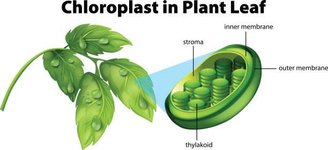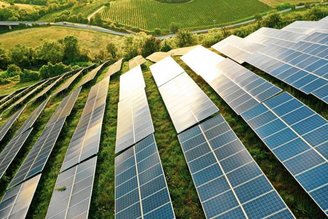Nature has a “secret” recipe that guarantees quality in energy production, storage and distribution processes. It is no coincidence that there is a branch of technology called biomimicry, which develops equipment and processes based on observation of the natural world, as in artificial photosynthesis.
First, We can understand that artificial photosynthesis is a way to improve plant production without the presence of So.l, but the concept and development of this field is focused on obtaining energy and producing sustainable fuels.
So how is this possible? For decades, researchers have focused on the problem of developing cleaner practices in energy production and replacing fossil fuels. This may be another alternative source but there are still many challenges, stay tuned.
Photosynthesis of every day
Photosynthesis is a natural process that converts energy received from the Sun into chemical energy by obtaining energy from plants and other chlorophyll organisms. There are three main components in this process: sunlight, carbon dioxide and water.
Photosynthesis occurs mainly in leaves where chlorophyll, a green pigment or chlorophyll structures are present. Leaves have the function of capturing CO2 suspended in the atmosphere, which interacts with water and sunlight in a structure called chloroplast, which is very similar to mitochondria in animals.
In vegetables, other elements in the soil are added to the water, meaning “pure water” is not used in the system. This reaction produces oxygen, which is returned to the environment and glucose to feed the plant. Important for artificial photosynthesis is the ability to convert energy from simple elements..
But what is artificial photosynthesis after all?
Artificial photosynthesis mimics processes that break down water and carbon dioxide molecules through the use of synthetic cells. These photocatalytic cells mimic the interaction process carried out by chloroplasts, but this does not provide much efficiency and results in rather costly processes.
The experiment generally takes place by placing plates covered by these cells, which can be porphyrins prepared with tyrosine, among other photosynthetic technologies, in the middle of the “break” component stimulated by exposure to light.

These plates are stimulated by light, which can be solar or UV sources. As a result, it is possible to obtain hydrogen by splitting water molecules and hydrogen by splitting CO2., Carbon monoxide, a desired product for methanol production, can be obtained.
Artificial photosynthesis has major benefits: CO2 capture Clean hydrogen production from ambient airWithout re-emission of gases into the atmosphere and without relying on the Sun as catalytic energy for the process, without the need for electrical energy sources or the use of fossil fuels.
But the challenges of making this process efficient and reproducible on a large scale still outweigh the technological and cost capabilities of the process, almost two decades after the development of artificial photosynthesis.
Catalyzing the future
Agendas arising from climate events and urgent appreciation for the development of technologies in the green fuel supply sectoror renewable energy refers to the need to invest not only in the production of these products but also in alternative forms of storage and distribution.
The main product of artificial photosynthesis is the production of hydrogen, a fuel that has the potential to replace fossil fuels. However, regardless of whether it can be extracted in any way, the processes to obtain it still have low efficiency.

Additionally, storage and distribution require special attention, as it is important to prepare the logistics to bring this product to market in all its potential uses. But this process is still slow, even in light of international commitments to reduce the world’s carbon footprint.
In this scenario, comes as a proposal to produce green fuels through artificial photosynthesis, sunlight, CO2O capture and obtain hydrogenIt simulates a natural process that is believed to be less harmful to the environment.
Conservation and efficiency have been a focus in the development of new technologies, but although it was proposed almost a decade ago, it will be at least another decade before we find out. If artificial photosynthesis could truly represent an energy future for the world.
Did you like the content? Stay up to date on more topics like this at TecMundo and get the opportunity to learn about 5 jobs that will work with green hydrogen. Until later!
Source: Tec Mundo
I’m Blaine Morgan, an experienced journalist and writer with over 8 years of experience in the tech industry. My expertise lies in writing about technology news and trends, covering everything from cutting-edge gadgets to emerging software developments. I’ve written for several leading publications including Gadget Onus where I am an author.













